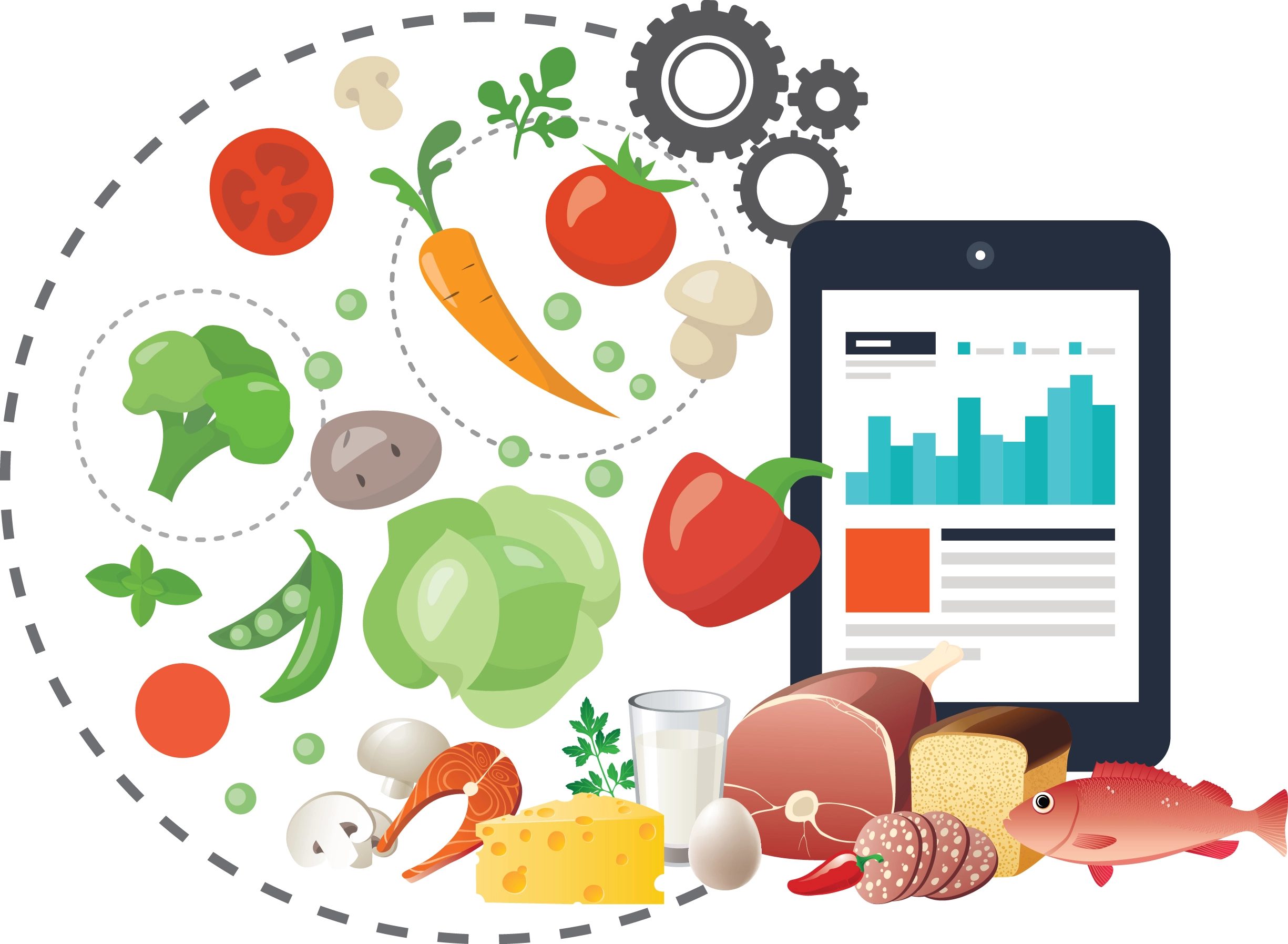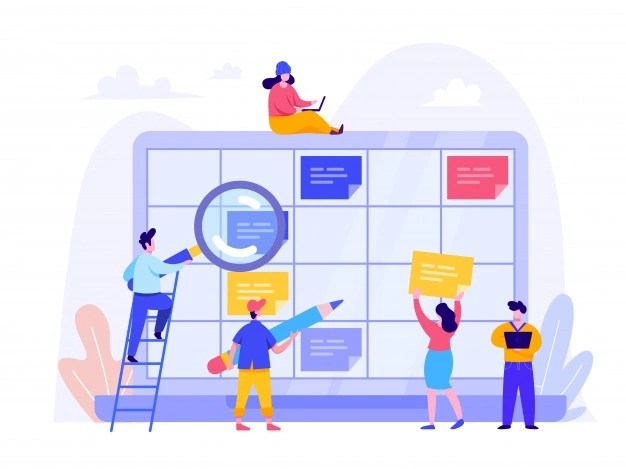Content Marketing in the Food & Beverage Industry
The food and beverage industry is highly competitive, which is why a solid content marketing strategy is more important than ever. Here's how to get started.
Every Business Needs Great Content
Connect instantly with highly-vetted writers across 50+ industries. Manage your entire content production in one easy-to-use platform. Never worry about content again for your SMB.
Get StartedA fully-supported, flexible content marketing solution for digital and creative marketing agencies. We will match you with highly-vetted writers to best support the content needs of each of your clients.
Learn MoreLarge enterprise businesses in need of a turn-key content marketing solution. Add a dedicated, expert writing team from Scripted to research, produce, and publish premium content.
Learn MoreProducing consistent, quality content on your publishing or media site means managing a lot of moving parts including multiple deadlines, assignments, and payments for freelancers. Scripted can handle it all.
Learn MoreThe year 2020 was a challenging one for many businesses, especially those in the food and beverage industry. Although certain sectors experienced disruptions in the supply chain or temporary business closures, the food and beverage market is expected to grow from $5.84 trillion in 2020 to $6.2 trillion in 2021. By 2025, this market is anticipated to hit $8.16 trillion at a compound annual growth rate (CAGR) of 7%.
This competitive arena means it's no longer enough to have an excellent product or offer a reliable service. You need to focus on customer engagement. As the food and beverage market continues sustaining work, digital marketing can help you stand out from your competitors. If you're not focusing on content marketing, you risk being left behind. That's because 70% of marketers actively invest in content marketing; and in 2020, nearly a quarter of marketers increased their investment in content.
Why Creating a Content Strategy Matters

Food and beverage brands had to rethink their approach in 2020, capitalizing on direct-to-consumer strategies to help drive their strategies. While most food brands post creative, targeted content, many brands lack a central content hub — and few things are as important online as content.
Content creation should be a fundamental component of your marketing strategy.
When you create quality content that appeals to your audience, you position yourself as a leader. Whether
you're marketing your restaurant, a beverage product, or a new kitchen gadget, the goal is to position
yourself as an expert. Not only does this help build trust and loyalty with current consumers, but a
quality content library also attracts new prospective customers.

Content has the power to encourage and enable people to take action. In this case, it's all about customer-centric content that provides your audience with something of value. The term engagement is rather vague and its meaning varies from one brand to the next. Some view engagement as the end result, such as getting a customer to buy something or click something. These variables are measurable. However, engagement can also be the experience you create or how you answer someone's question. Overall, the two most important elements of engagement are relevance and customer-centrism.

In today's world, consumers look for brands they can trust. Those who remain authentic and honest succeed. In that sense, authenticity is directly linked to customer engagement. Although it's important to focus on SEO and other marketing strategies, online reputation management is also important. Once your reputation and credibility are significantly tarnished, it's tough to regain traction. To achieve authenticity through content marketing, remember to:
- Engage
- Offer value
- Focus on quality over quantity
- Remain authentic
Building the Foundation for Effective Content Marketing

Whether you're an established food and beverage brand or you're in the startup phase, before implementing your content marketing strategy, it's important to build a solid foundation.

Content marketing helps you create your brand identity, but it's important to have a solid brand identity before you plan your content. Consider not only who you are as a brand but also your vision and beliefs. What message do you want to convey in your content?
For example, HelloFresh is a successful meal-kit company that operates in Canada, the U.S., Western Europe, Australia, and New Zealand. While their core goal is to sell meal plans, HelloFresh leverages its mission to connect with consumers. Helping people "change the way they eat," their brand focuses on budget-friendly meals, high-quality food, and sustainable practices. They have created content that emphasizes each aspect of their mission, which helps to further solidify their brand. For example, their page on sustainability features reports, press releases, and stories.
Tip: Blogs are an effective way to showcase your brand, but so are case studies. When done correctly, case studies with concrete facts and figures illustrate how you've helped your customers. Depending on your brand, whitepapers can also be useful.

To successfully reach your target audience, you must have a grasp of who that audience is. This is where a customer persona comes into play. Although you may end up creating multiple personas based on the number and/or types of products or services you offer, it's important to start with at least one solid profile that represents the bulk of your customer base.
To create a complete persona, leverage your current customer data and perform market research. While filling in the blanks, focus on your customers' interests, goals, motivations, demographics, financial status, and behavior.
Depending on how you communicate with your audience, ask people to participate in surveys or interviews. You can offer incentives in exchange for participation, such as a 15% coupon for their first order. Then, turn to analytical data, such as your page traffic, bounce rate, social media leads, search engine traffic, and conversion rates. Google Analytics is a great choice to help you measure your content marketing success. You can also use keyword research, forum searches, and social activity to observe your target audience.
Here are some questions to consider during your research:
- General demographics: Age, location, gender, and education
- Occupation
- Hobbies
- Pain points
- Goals and motivations
- Beliefs
Tip: Create a visual in terms of who your personas are. Add images and name your profiles. This helps you think of each profile as an actual person, not just a piece of your strategy. HubSpot offers a wealth of information on persona creation and even a handy customer persona creation tool.

Professional content creators understand and can implement short and long tail keywords to help drive your SEO strategies. Keywords help you reach your audience based on what they're searching for. For example, if you own a restaurant in Portland, your keywords might be Portland restaurants or best restaurants in Portland. Use a keyword research tool such as Moz for successful link building. Google Keyword Planner is another popular choice.
When using Moz's Keyword Explorer, simply enter a keyword that relates to what it is you offer. In this case, your short-tail keyword would be Portland Restaurants.
Once you understand the search volume of select keywords, you will gain insight into what your customers care about most. After you create an account, you will then receive a comprehensive keyword analysis.
Read more about link building to improve your SEO strategy.
Tip: Start your keyword research on Google. When you type "Portland restaurants" into the search box, you will immediately see a list of Google's suggestions in the dropdown box. For example, in January 2021, some top suggestions are Portland restaurants open, Portland restaurants with outdoor dining, and Portland restaurant COVID takeout.
The Benefits of Quality Content Writing

Content is king, yes – but not all content is created equal.
When you invest in quality content, your company can increase organic traffic to your website, increase conversions, and boost sales. Content marketing is an investment in your business, and high-quality content is the first step in achieving higher returns.
The benefits of high-quality content include:
- Driving search engine optimization - a core component of your SEO strategy
- Increasing traffic to your site, and higher audience retention
- Generating leads
- Developing brand loyalty and authority
- Improving conversion rates
Best Practices for Quality Content

Outsourcing your content needs to a professional freelance writer can help you save time and money long term. Since most professional writers maintain high content standards, you get the benefits of an effective content marketing strategy while focusing your energy on what matters most - the growth and success of your food and beverage brand.
Here are some characteristics of quality content to consider moving forward:
- Content that's fresh and unique. If you publish regular content on your blog, this gives readers an incentive to come back.
- Social media content geared towards your customers. This content can be entertaining, interesting, informative, or all of the above.
- Content cohesion, originality, and authenticity. Build upon themes, offer information that isn't found elsewhere, and stay true to your brand.
Content should be factual and well-researched. Whenever necessary, content should link to reputable sources. It also needs to be free of errors and written in a manner that's both readable and approachable.
The Phases of the Customer Journey

Understanding your customer's journey can help you remain strategic. In the example below, we focus on restaurant owners.
During this phase, potential customers become aware of your restaurant. They may have heard about you from other customers or saw an ad on social media. Regardless of how they found your site, this is your opportunity to draw them in. Since they will be seeking information about who you are and what you offer, your content needs to support the next phase.
Before a new customer comes and eats at your restaurant, they'll likely conduct some research. If you have been leveraging keywords such as vegan or plant-based, you'll want to explain to prospective customers your core mission. Whether your goal is to develop a brand that focuses on sustainability or healthy living, offer insight into why someone should come and eat at your restaurant. What sets you apart?
At this point, customers make a decision. They arrive at your restaurant, order food, and then potentially leave feedback. If they had a positive experience, maintain the relationship you have with them through your content — especially on social media. Keep customers informed about upcoming events, specials, and menu changes.
How to Craft a Content Marketing Strategy for the Food & Beverage Industry

Once you have built your customer persona(s) and determined relevant keywords, it's time to craft your strategy.
Determine what your goals are
Your content marketing plan begins with your evaluating your goals. While goals may vary from one food and beverage company to the next, these are the most common:
- Brand awareness — When you create high-quality content that showcases your brand's knowledge and expertise, you build trust with your audience. This will allow you to increase awareness while solidifying your brand as a leader. The ultimate goal here is to build loyalty by exposing your brand, creating emotional connections, and generating greater consumer engagement. High ranking content can get listed in the "featured snippets" section of Google.
- Consumer education — Focus on some of the most common questions you hear from customers. Ask your sales team to be more mindful of the most frequently asked questions, as well as answers that provide brand insight.
- Lead generation — Great content encourages readers to register for an upcoming event, sign up for a demo, or enter a sales pipeline.
Invest in various types of content

It's also important to build various online channels. While you don't need to be everywhere, focus your time and resources on your website and at least two social channels. Your website is your own piece of online real estate that provides you with the opportunity to build a content hub — one that can be fully optimized for SEO purposes. Audiences on social platforms also love food and beverage brands.
Consider the following formats so that you can budget accordingly:
- Written content — Whether you're regularly publishing blog posts, currently focusing on case studies, or optimizing your social media profiles, your written content is the backbone of your SEO strategy.
- Video content — This option can help you quickly build a highly engaged audience. Videos can be shared on numerous channels with a link to your site. This approach may require written content in the form of video scripts.
- Images — The food and beverage industry is highly visual. Source unique images that represent who you are as a brand.
Choose the right platforms for your brand

As of the fourth quarter of 2020, Facebook had roughly 2.8 billion monthly active users. While Facebook is certainly a wise choice, don't be shy to venture out. Again, think about the customer personas you created. Ask yourself:
- Is my ideal customer on social media, and if so, which platforms do they use?
- Is my ideal customer seeking information on these platforms?
- What content formats do they prefer?
Remember not to stretch yourself too thin. Focus on 1-2 platforms to start and as you grow, you can expand this part of your content marketing strategy. Facebook and Instagram are both great platforms for food and beverage brands, as well as Pinterest. Depending on what you offer and who you're looking to connect with, LinkedIn may also be a good option, especially when seeking partnerships or investors.
Create a list of blog ideas based on keyword research and search intent

To remain organized, it's highly recommended you create a content calendar. You can color code your calendar based on content types. When you stay ahead of your content, this helps ensure consistent posting, which is critical in terms of engagement and growth. Your schedule can be as simple or complex as you need it to be. However, at the very least, it should address:
- Content types
- The platform(s) you'll publish on
- When you'll post
- How often you'll publish new content
While you don't need to have a full year set in stone, it's best to start filling in the blanks for the calendar year ahead. That way, you can plan ahead for special events, promotions, seasonal content, and more. It's also ideal to have evergreen content planned.
Focus on SEO

SEO and content marketing work together to achieve the same goals. That's why SEO descriptions for both your social media and website content are critical. Although search is relevant for all industries online, it is particularly important for food and beverage companies. To remain competitive, it's best to optimize your content from day one, focusing on both off- and on-page SEO. This can help you improve online visibility and increase exposure. Once you've caught the attention of consumers, reward them with valuable content.
Examples of Food and Beverage Companies with Clever Campaigns
Food and beverage companies fight for consumer attention. Here are a few examples of clever campaigns from food and beverage companies doing it right.

Ben & Jerry's is a highly recognizable name. Of course, this company is best known for its delicious ice cream, but as a brand, they have worked very hard to achieve something greater. They have long taken a stand on various ethical issues, including pressing social and political issues. They feature their values on their website and within their marketing strategies — and they do it very well.
As you'd expect, their content highlights the wonderful world of ice cream in terms of fun flavor names and new flavors. However, their content is also written within their values in mind. Whether they address topics such as racial justice or climate change, the content they create is engaging because it's powerful. They have a whole section on their homepage navigation bar that focuses on their values, including the issues that are important to them.
Research shows that consumers respond well to campaigns that take a stand. Considering 73% of people believe companies should do more than just offer a product or service, this strategy has worked well for Ben & Jerry's.

Shari's Berries is a brand that offers imaginative gourmet food gifts. From cake pops to cookies, they created a line of treats with a core focus on their famous farm-fresh strawberries. This brand has created a ton of content on their blog, focusing on the interests of their customers. Whether they post topics on healthy living or time spent with family, their CTAs invite readers to check out their website, full of decadent confections.
Shari's Berries have done an excellent job of tapping into the emotions of their audience, particularly in terms of seasonal content — and have achieved an impressive following on Instagram. This brand consistently provides customers with valuable content, and it's paid off.

Organic, natural foods have gained traction in recent years. Health-Ade Kombucha has been successful due to its unique product marketing and commitment to quality content. Their goal has been to position kombucha as more than a beverage, which is the core focus of this brand's blog. In addition to health-related posts, this brand highlights a wide range of recipes using their kombucha, as well as guides that focus on social causes, DIY projects, and education.
They create all of their website content with a purpose, encouraging kombucha lovers to join them on the "happy gut" movement.
Implement a Winning Content Marketing Strategy with Scripted
The food and beverage industry continues to evolve and grow, creating new trends and opportunities. Regardless of your niche, developing a content marketing strategy that works for your brand helps you remain relevant and successful.
If you're aiming to take your content marketing strategy to new heights this year, Scripted can help you achieve your goals. We offer a wide selection of membership options, in addition to Scripted Cruise Control. When you select this option, Scripted takes the wheel, providing you with a dedicated account manager and SEO specialist.
Start browsing our selection of food and beverage writers to get started today!



